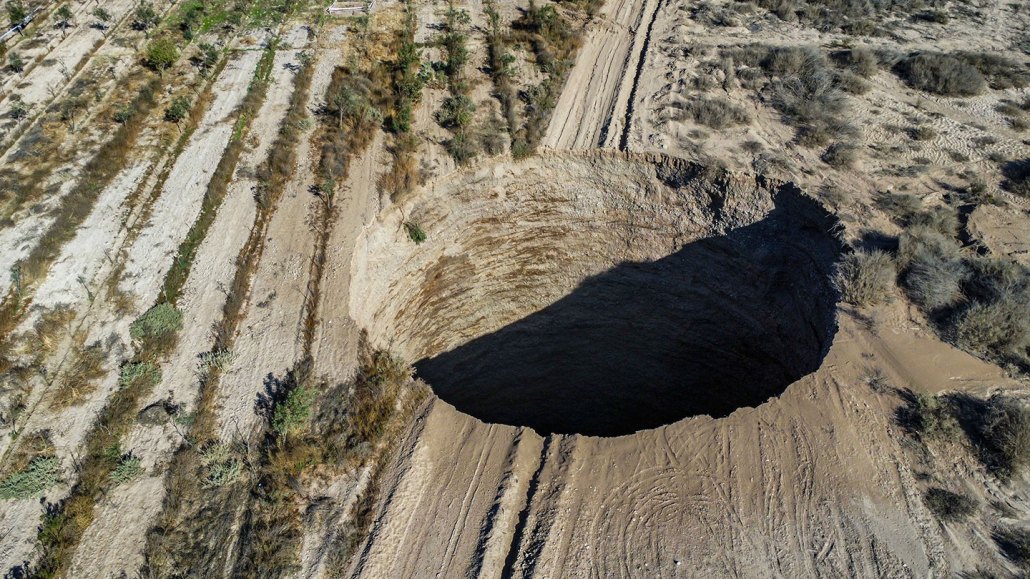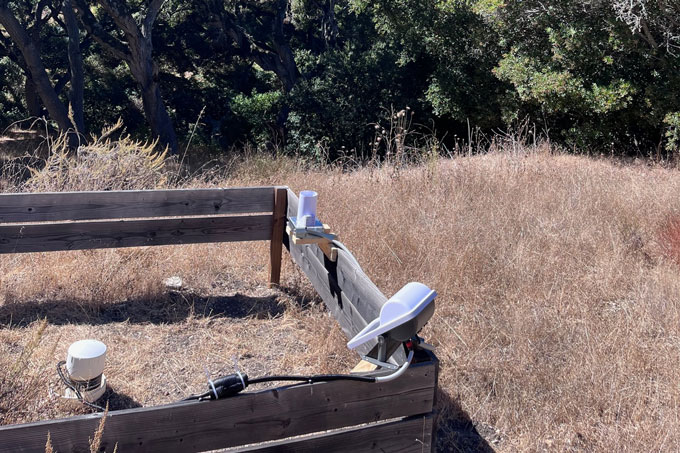Many natural underground stores of freshwater are shrinking
Fortunately, some aquifers are growing, which is likely due to better water management

This enormous sinkhole developed in the summer of 2022 in Chile’s super-dry Atacama Desert. It would lead to the closure of a nearby mining operation in Tierra Amarilla. Excessive groundwater removal by that mine is suspected of leading to the hole’s formation.
JOHAN GODOY/AFP/Getty Images Plus
Share this:
- Share via email (Opens in new window) Email
- Click to share on Facebook (Opens in new window) Facebook
- Click to share on X (Opens in new window) X
- Click to share on Pinterest (Opens in new window) Pinterest
- Click to share on Reddit (Opens in new window) Reddit
- Share to Google Classroom (Opens in new window) Google Classroom
- Click to print (Opens in new window) Print
Across the globe, precious natural stores of underground freshwater have been shrinking. In nearly one-third of these aquifers, that loss has been speeding up over the last couple of decades.
That’s the finding of a new study in the Jan. 25 Nature.
Humans have been drawing water out of aquifers faster than rainfall can replace it. Earth’s changing climate is also slowing how fast water refills both aquifers and surface lakes.
This one-two punch has been leading to water shortages. With less water underneath, some land surfaces are slumping. And near coastal areas, seawater has been entering some aquifers, tainting freshwater with salt.
Groundwater volumes have dropped in many places since 2000, the new study finds. But it also suggests these losses can be reversed.
This study is the first to evaluate global-scale data collected at groundwater sites. In the past, such analyses came from satellite data. Such studies had relied on a pair of NASA satellites known as GRACE. They estimated global groundwater losses by scanning the globe. But some details of water loss — and recovery — can be hard to detect from space, authors of the new study point out.

Hydrologist Scott Jasechko of the University of California, Santa Barbara, is one of those authors. He was part of a team that analyzed water-level data stretching back to 1980. Those data came from some 170,000 monitored water wells. They offer a glimpse of the status of nearly 1,700 natural stores of groundwater — among the world’s largest.
From those wells, the team now shows where water has been disappearing fastest. In 12 percent of these aquifers, water levels are now dropping by more than half a meter (1.6 feet) per year. And more than one in three of these aquifers have shown water levels dropping by a tenth of a meter (4 inches) per year.
Declines were fastest in some of the world’s driest regions. These included central Chile, Iran and the U.S. West.
There are signs of hope
In some places, though, large groundwater stores have begun to grow — even after shrinking at the end of the last century. Such changes likely come from managing these aquifers differently, the study suggests.
Take an aquifer in Thailand’s Bangkok basin. Its groundwater losses have reversed in the last 20 years. Why? Governments around it began charging fees for using groundwater. They also started licensing wells.
The Abbas-e Sharghi basin in Iran has begun recovering, too, after the government built a large dam. It diverted water to the very dry region.
These reversals suggest that long-term groundwater losses are not universal, the team says. And they need not be permanent.
The results also help explain differences between GRACE data and local observations of groundwater levels, says Li Xu. He’s an environmental scientist who did not take part in the new study. He works at the University of Saskatchewan’s Global Institute for Water Security in Saskatoon, Canada.
Studies like the new one can be a big help in showing where and why those differences show up, he says. And, Xu adds, they “will definitely contribute to creating a global baseline for sustainable groundwater management.”
By finding hot spots that need the most urgent attention, Xu says, this work also helps highlight which parts of the world are most at risk. There, water losses may spur the forced migration of people who seek reliable access to drinking water, he adds. Across the globe, he notes, “Water is the key trigger for human migration.” And people living in low- and middle-income countries and in dry regions “are most vulnerable.”
Finding those at-risk regions could lead to timely policy changes to protect water resources, he says. That’s especially important where aquifers straddle national borders. In such spots, Xu says, water woes “could further increase the risk of armed conflicts.”
Do you have a science question? We can help!
Submit your question here, and we might answer it an upcoming issue of Science News Explores







